► Ford’s all-electric Explorer (finally) driven
► Uses VW Group MEB platform with Ford tech
► Mainstream EV is crucial to get right
Since its conception, the Ford Explorer electric SUV has had close ties to the Volkswagen ID.4, as the two models share underpinnings and, supposedly, a similar target audience. As a result, they’ve often been compared to each other, but in reality, the two have as many differences as they do similarities.
For a start, the new Explorer is made by Ford, not by VW. Designed and engineered in Europe for Europe, it’s built at the Cologne factory that has made 18 million Fords since 1930, but is now a dedicated EV plant after a €2bn refit, powered by renewable energy and making extensive use of AI and robots.
As Ford pushes towards an electric-only European line-up from 2025, the Explorer will soon be joined in the Cologne factory by another new EV, a sports crossover that will replace the Focus. That’s on top of the imminent new Puma EV.
For now – vans and the non-imported F-150 Lightning pick-up aside – the Ford EV line-up is the Explorer plus the Mustang Mach-E, which has been with us for a few years now. The strategy is similar: take a familiar Ford name and apply it to an EV that has at most a superficial resemblance to combustion cars wearing that badge. In the case of the Explorer, it went missing from the UK long ago, and wasn’t widely mourned, but the badge lives on in the US.
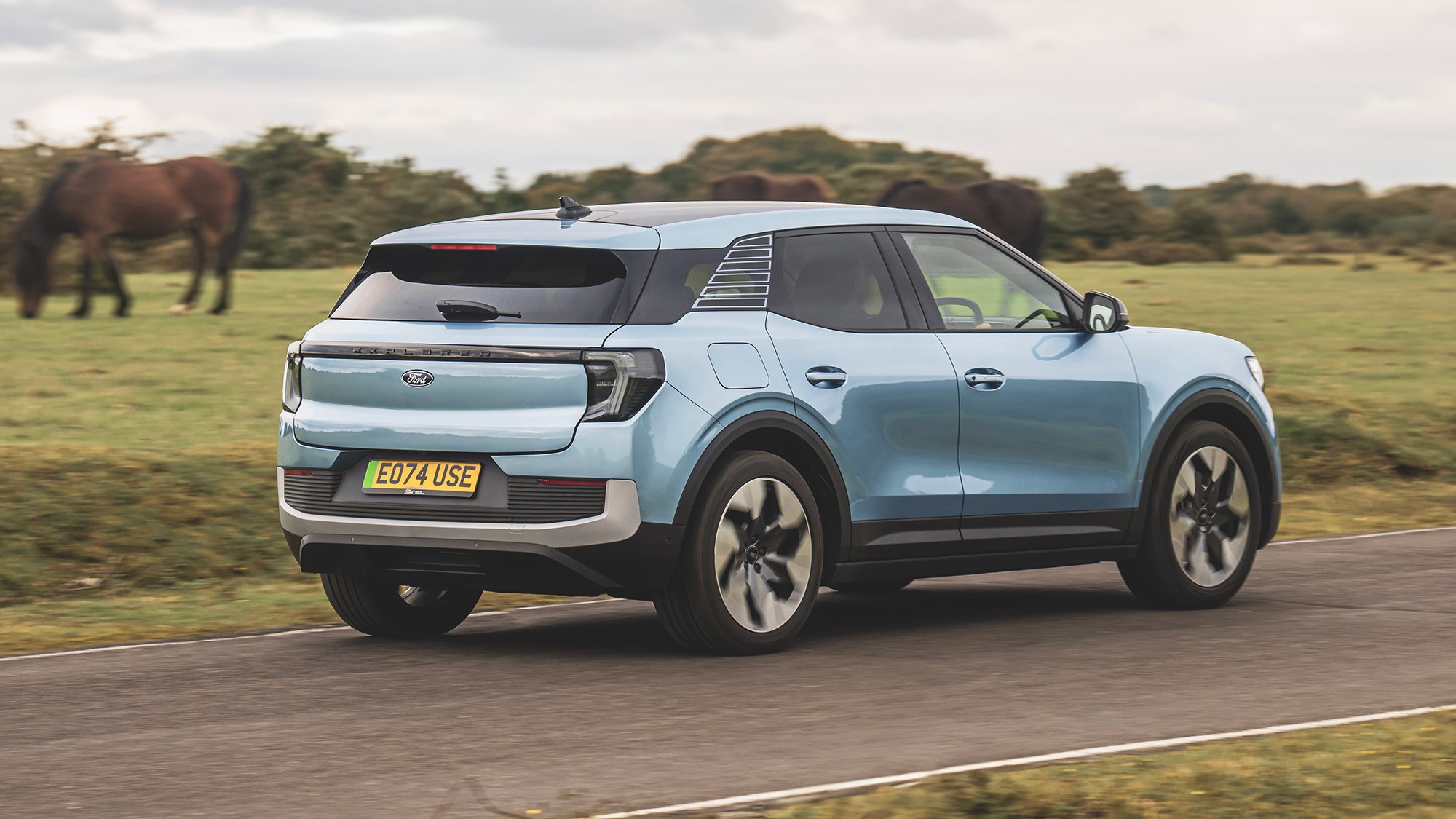
The new electric Explorer is styled like a modern SUV, with hints of the larger non-electric US Explorer. Although this car has much in common under the skin with the ID. 4, the skin is all its own. As well as being sharper looking, it has had 120mm removed from the rear overhang, which isn’t so clever if you want to load up with heaps of luggage, but has the range-positioning advantage of ensuring that it’s clearly a different size and different shape from the Mustang Mach-E.
At a glance
Pros: Sharp looks, good ride and handling, roomy cabin
Cons: Some cheap-feeling materials, modest boot, fiddly infotainment
What are the specs?
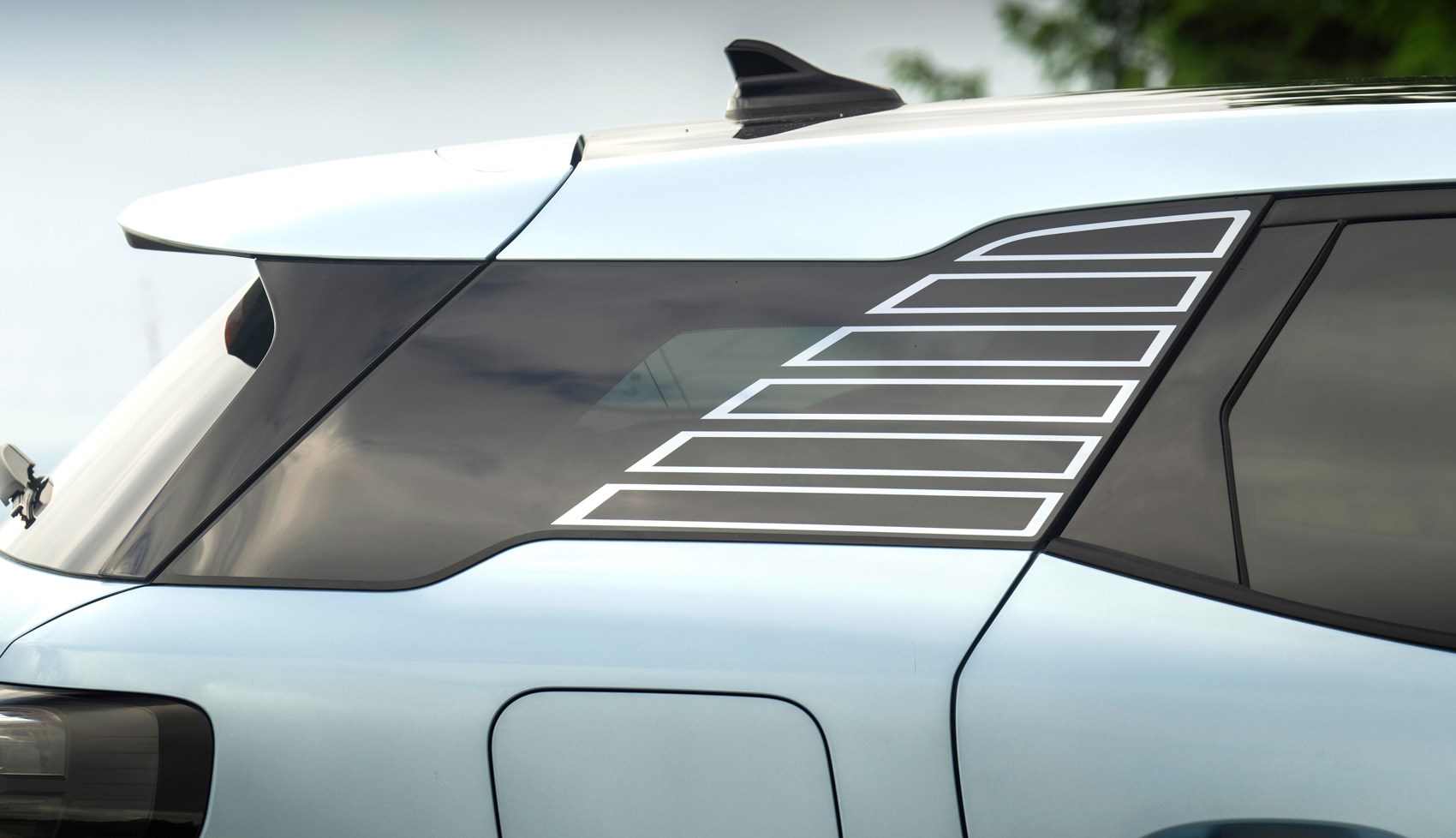
You can get the Explorer with rear-wheel drive or all-wheel drive. For now, all rear-drive versions are billed as Extended Range, signifying a 77kWh (net) battery. Rear-drive involves a single e-motor; all-wheel drive adds a front motor and ups the battery to 79kWh. All versions have a single-speed transmission.
A Standard Range version will follow in a few months with a 52kWh battery, only in rear-wheel drive. All versions of the Explorer have a single-speed transmission.
There are two trim levels, Select (available with the Standard Range car and the RWD Extended Range) and Premium (also on the RWD Extended Range, and the only way to get the AWD Extended Range).
WLTP official figures show that the 52kWh RWD car has efficiency of 4.0 miles per kWh and a range of 239 miles. The 77kWh RWD version manages 4.47 miles per kWh and 374 miles of range. Premium RWD offers 4.23 miles per kWh and 354 miles. Top-spec AWD Premium, with the biggest battery, combines 3.74 miles per kWh and 329 miles of range.
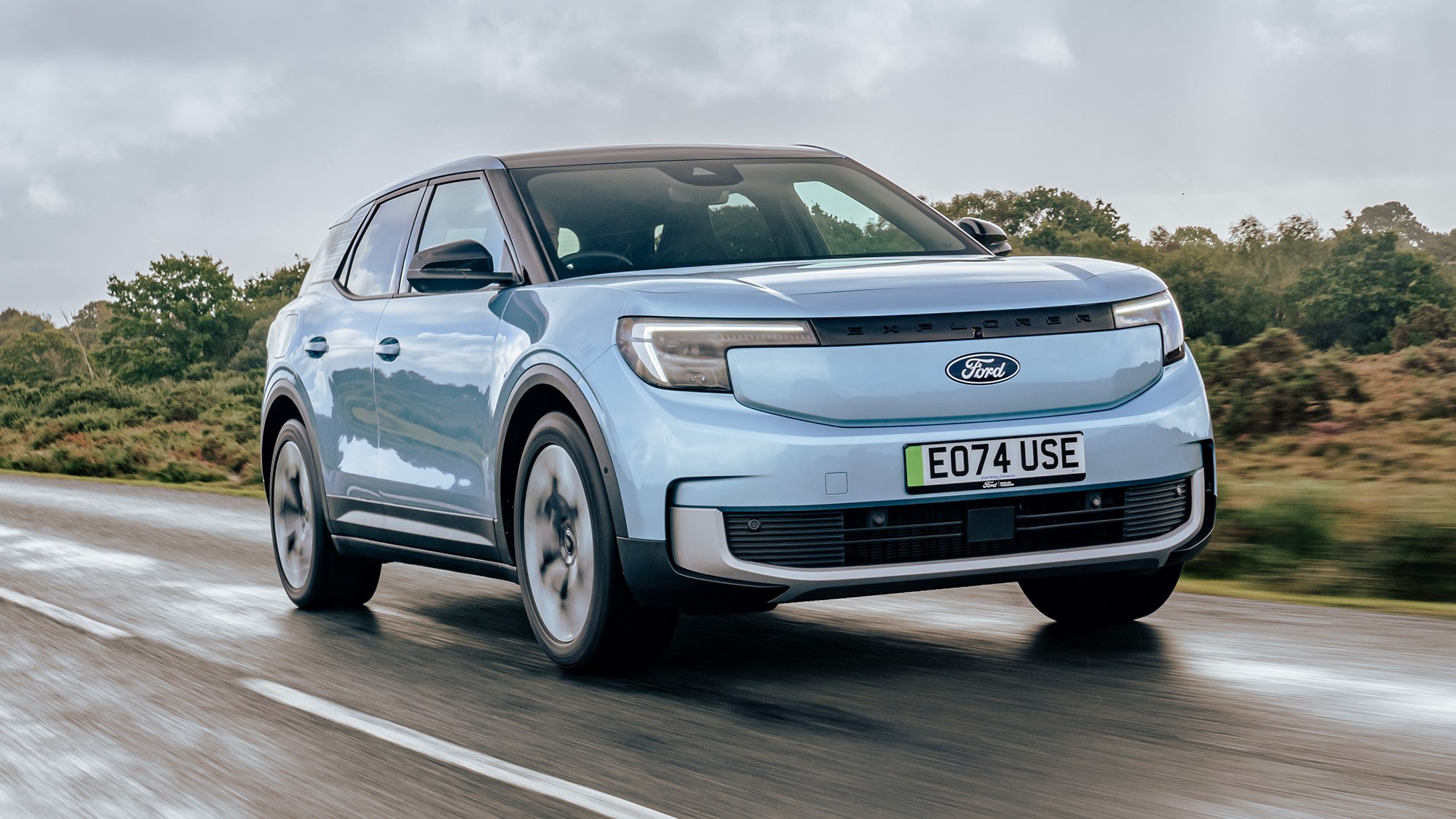
The Extended Range RWD motor makes 282bhp and 402lb ft of torque, with a top speed of 112mph and a 0-62mph time of 6.4sec.
The Extended Range AWD ups that to 335bhp, along with 402lb ft from the rear motor and an extra 99lb ft of torque from the front. Acceleration is better, at 5.3sec 0-62mph, but the top speed is the same.
They use new lithium-ion NMC batteries with a claimed charging time of 28 minutes from 10 to 80 per cent for the Extended Range RWD and 26 minutes for the AWD.
What’s it like to drive?
Step inside the Explorer and you’re firmly in compact family SUV territory. If you’re looking for an of-the-moment mainstream EV, you’re in the right place.
If you’re familiar with electric VWs, some aspects of the cabin will look and feel familiar, but Ford has made various changes to the appearance.
The bigger changes, and very welcome too, are to the way it rides and handles. The things that Ford has modified are all changes for the better: the steering, the shock absorbers, the anti-roll bars. Our AWD test car, riding on 20-inch wheels (standard with Premium spec), is night-and-day better than the latest VW ID. 4, also on 20-inch wheels. The VW is all too often unsettled and wallowy, where the Ford is better controlled, with a more rewardingly precise feel to the steering.

The ride isn’t perfect: with no engine to muffle the sound, you’re very aware of juddering over some small bumps. And through bends, you still get some roll, but not as much as the VW. On UK roads, the suspension felt taught, and was occasionally quite unforgiving over some of the more pronounced imperfections, but it was generally quite a comfortable ride.
The Explorer was very happy to pootle in town; it will swiftly hustle up to motorway speeds – the AWD version’s 0-62mph time is better than the Focus ST’s; and it seems to relish the challenge of twisty hairpins and even unsurfaced logging roads.
Switching driving modes makes an appreciable difference to the level of brake-energy recuperation. In Normal when you lift off the throttle, the car slows; in Sport it slows a lot; in Eco not so much. There’s also a B setting on the stubby gear selector on the steering column to force some extra electricity into the battery.
On the whole it’s smooth and comfortable, without being luxurious or overtly sophisticated.
What’s the interior like?
It’s a fresh, modern design, aiming beyond VW towards Tesla/Hyundai EV territory in its techy simplicity. It makes the Mustang Mach-E cabin, for all its relaxed charm, feel very old hat.
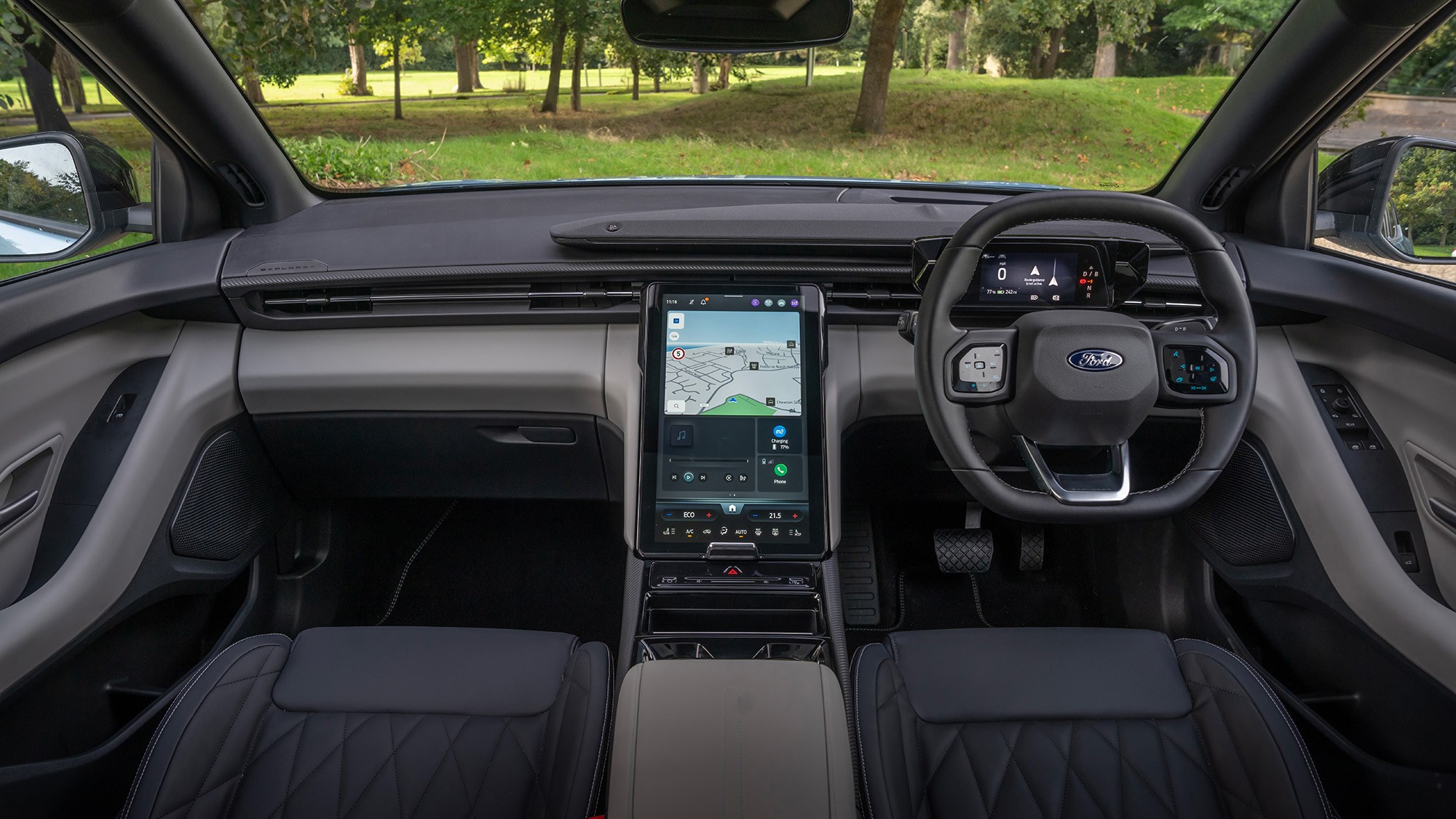
The car is just a couple of centimetres longer than a Focus, but has cabin space more akin to a Mondeo or Kuga.
There’s a new 14.6-inch central touchscreen that pivots to reveal a cubby for valuables, and there’s a massive stowage area in the central armrest.
Fitted as standard are heated front seats and steering wheel, dual-zone climate control, and massage and memory functions on the driver’s seat. Apple CarPlay and Android Auto are fitted too.
Like its VW cousins, the Explorer comes with an extensive set of sensors and cameras that enable a suite of assistance systems including cross-traffic alert with active braking, intelligent adaptive cruise control and a lane-keeping aid.
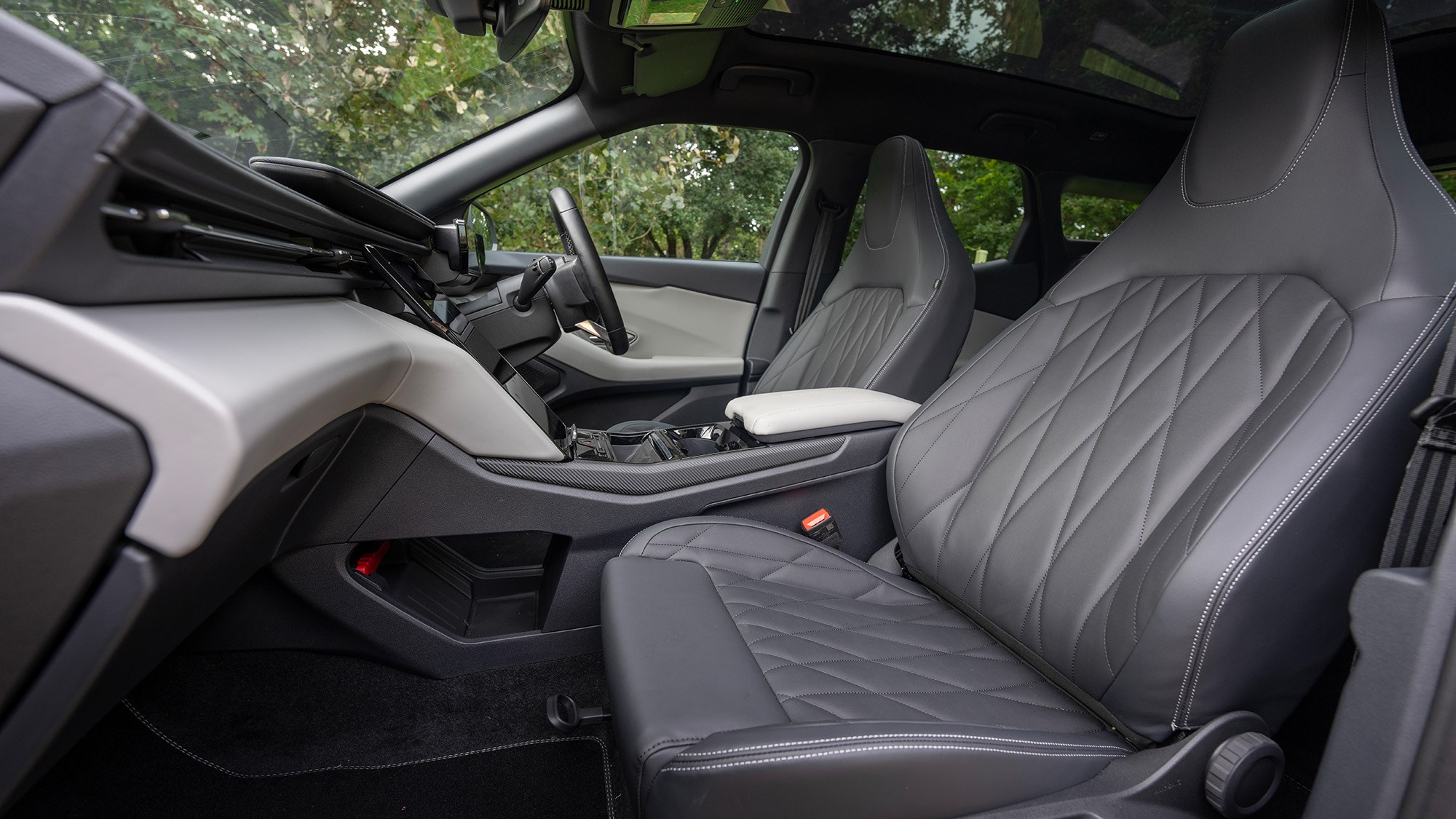
Options include active park assist, a head-up display, 360º camera, assisted lane change and lane-centring – a system that, on a well-marked road, will effectively do your steering for you. (But the BlueCruise semi-automomous system is not currently offered on the Explorer.)
Before you buy
Select spec has 19-inch wheels, LED lights front and rear, a seven-speaker audio system, manual tailgate, manual passenger seat, 14.6-inch touchscreen and 5.3-inch instrument screen.
Premium spec ups that to 20-inch wheels, matrix LED headlights, 10-speaker audio and (for the UK) a panoramic glass roof. That roof feels like the most desirable option – it really lightens the cabin.
Upholstery on Select cars is part-Sensico trimmed; Premium gets full Sensico, Sensico being a faux-suede material.
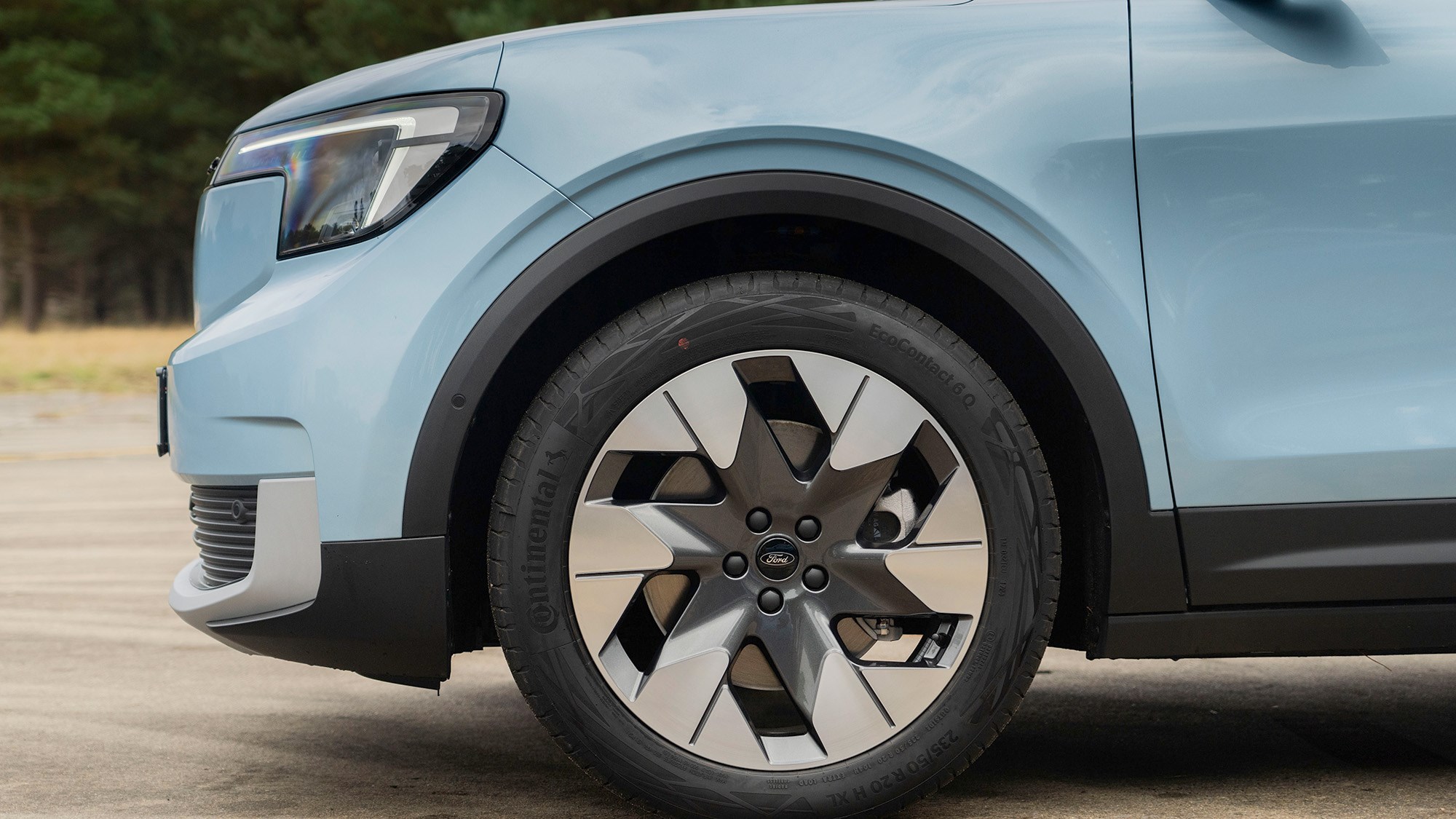
Options include a heat pump for £1050, especially useful for warming the cabin and battery in winter for greater efficiency as well as comfort, and a towbar for £900.
Pricing for the first versions – all Extended Range, remember – starts at £45,875 for the Select RWD. Premium RWD is £49,975 and Premium AWD £53,975.
When it arrives, Select RWD with the Standard Range battery will be a competitive £39,875.
The Explorer enters a packed field of impressive alternatives including the Skoda Enyaq, Hyundai Ioniq 5, Kia EV6, Volvo XC40, and of course the VW ID. 4.
Verdict: Ford Explorer
Why this rather than an ID. 4? For our money it looks better. It loses out on boot space but it drives in a more engaging way and rides in a more composed manner.
Why this rather than a Mustang Mach-E? This is slightly taller, not quite as long, with a bigger rear boot; it’s properly SUV shaped, whereas the Mach-E is a weird crossover/pony mash-up. Which probably makes the Mach-E more of an ID. 5 rival, although objectively they’ll all in the same ballpark.
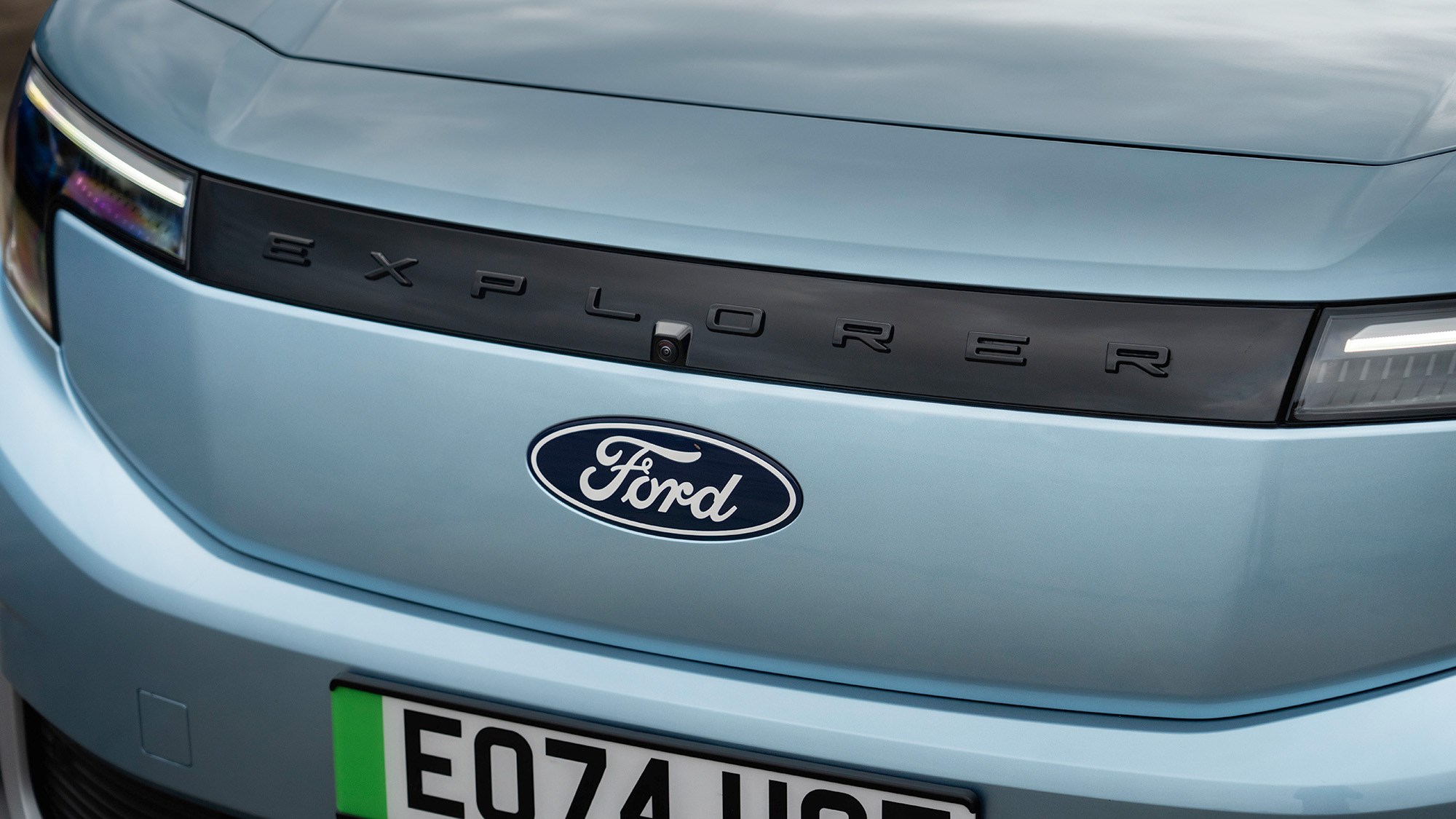
Until we’ve compared it back to back with its rivals, we shouldn’t rave. But driven in isolation, the Explorer is a very impressive package: good to drive, smart, well equipped and competitively priced. And, frankly, better than any current electric VW.
Specs are for a Ford Explorer Premium Extended Range AWD